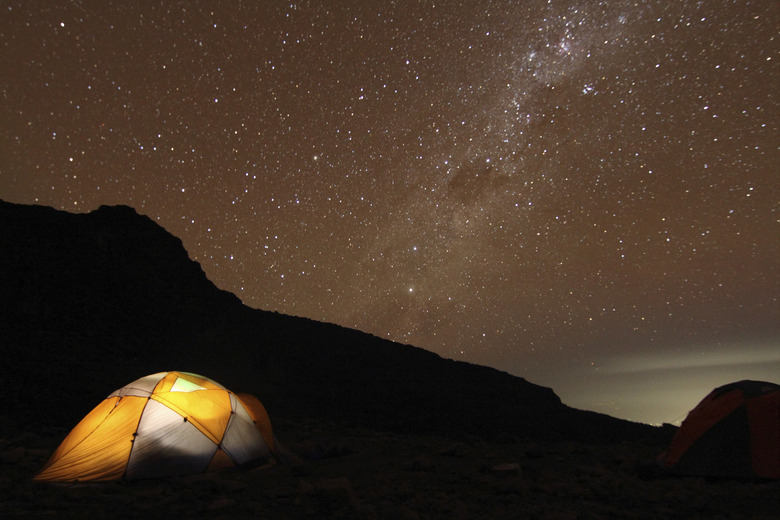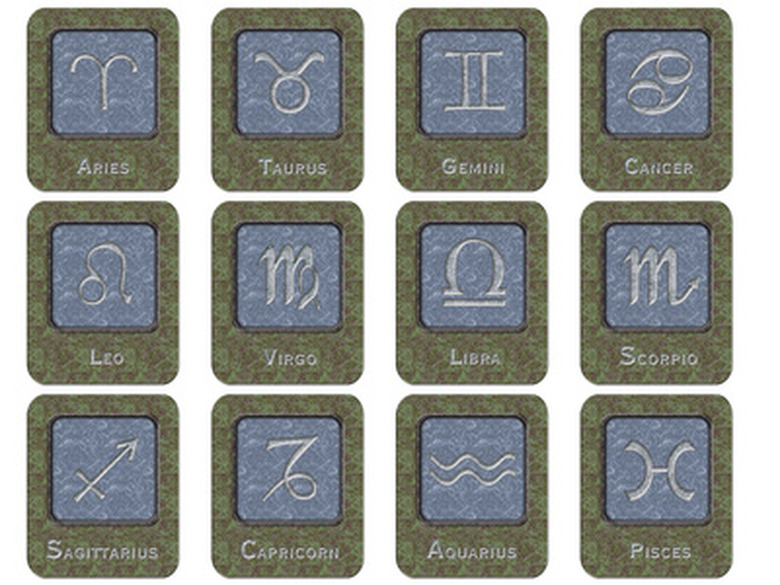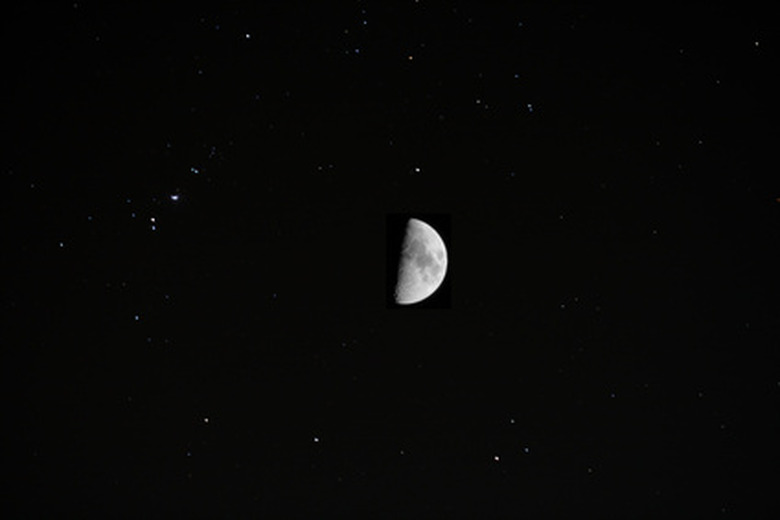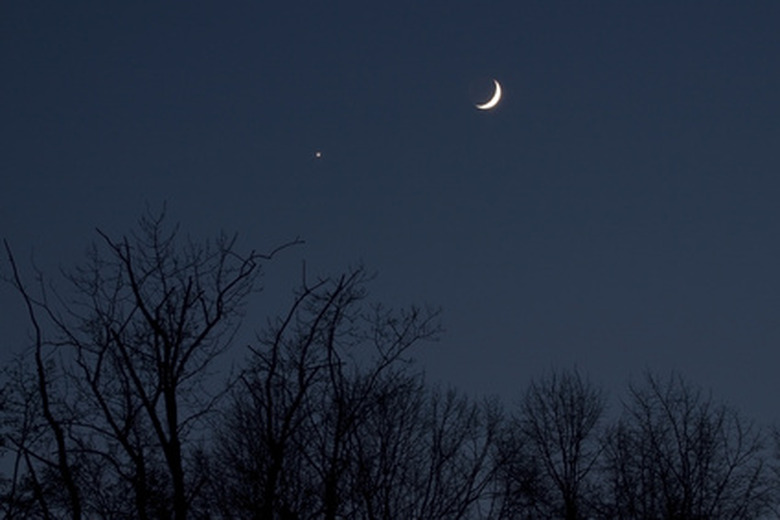Why Do Objects Appear To Move Across The Sky At Night?
Objects such as stars appear to move across the sky at night because Earth spins on its axis. This is the same reason that the sun rises in the east and sets in the west. Stars that are low in the east when the night begins are high in the sky halfway through the night and low in the west by daybreak the next day. During the day, the stars continue to move across the sky, but the sun is so bright that they can't be seen. Of course, the stars aren't moving relative to the Earth's position in space. They just appear to move to human stargazers.
A Difference in Speed
A Difference in Speed
The stars move across the sky a little faster than the sun. This difference arises because the stars appear to move only because of Earth's rotation, while the sun also appears to move because the Earth goes around the sun once a year. This difference equates to about four minutes per solar day. So the stars take four minutes fewer to reach the same position from the previous day than the sun does.
The Zodiac
The Zodiac
Because of this difference in speed between the sun and background stars, the sun sits in front of a different set of stars each month, relative to Earth. The sun sits directly in front of 12 star constellations — groups of stars that resemble an object — and which constellation it sits in front of depends on the time of year. These 12 constellations make up the Zodiac. Which constellation was in front of the sun at the time of a person's birth determines that person's zodiac sign.
Lunar Motion
Lunar Motion
The moon revolves around Earth, speeding across the sky even faster than the stars. You can perform a calculation similar to the one previously mentioned to see that the moon takes 52 minutes less than the sun to reach the same position it had the day before.
Inner Planets
Inner Planets
The two inner planets, Venus and Mercury, are visible from Earth with the naked eye. They take much less than one year to go around the sun. Observers on Earth see them on opposite sides of the sun through the course of the year. Venus and Mercury appear just after sunset or just before sunrise near the sun at different times of the year.
Retrograde Motion of Outer Planets
Retrograde Motion of Outer Planets
The following three outer planets are visible from Earth with the naked eye: Mars, Jupiter and Saturn. Being farther from the sun and Earth, they take longer to go around the sun. When a given outer planet is on the opposite side of the sky from the sun, it appears to go backward relative to background stars during part of the year. If you were above the solar system looking down at the time, you'd see Earth between the sun and the outer planet. Earth would be overtaking the outer planet as it goes faster in its orbit, producing this temporary retrograde motion.
References
Cite This Article
MLA
johnmcgee, . "Why Do Objects Appear To Move Across The Sky At Night?" sciencing.com, https://www.sciencing.com/do-move-across-sky-night-7217166/. 24 April 2017.
APA
johnmcgee, . (2017, April 24). Why Do Objects Appear To Move Across The Sky At Night?. sciencing.com. Retrieved from https://www.sciencing.com/do-move-across-sky-night-7217166/
Chicago
johnmcgee, . Why Do Objects Appear To Move Across The Sky At Night? last modified March 24, 2022. https://www.sciencing.com/do-move-across-sky-night-7217166/



